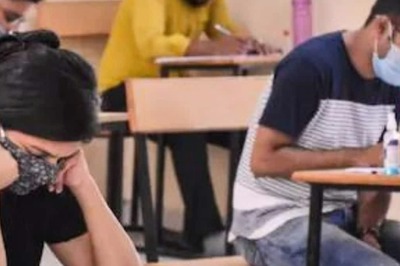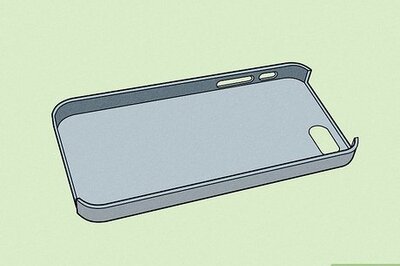
views
Bengaluru: ‘Go and explore where others have never gone so far’. This is one of the goals of Chandrayaan 2, the Indian Space Research Organisation's second mission to the moon slated for next month.
And as work picks up pace with less than a month to go for the launch, scientists across the world are looking forward to this 15-day mission for insights on many aspects. Chandrayaan 2 will be active for 15 earth days, equivalent to one lunar day, while the scientists are trying to mine the maximum out of this for future use. It will look at gathering data on water, minerals, temperatures, besides analysing the elements on the rock formations and craters on the lunar surface.
The mission would primarily carry forward what the Chandrayaan 1 strove to do, though with a little more method in its 'ground'-work. While Chandrayaan 1 had restricted itself to orbiting the moon and sending back data (apart from a small 'impactor' that crashed into the moon's surface), Chandrayaan 2 has three modules to it -- an orbiter, a lander (named Vikram) and a rover (named Pragyan).
One of the primary instruments on board Chandrayaan 2 is the Imaging Infra-Red spectrometer (IIRS) which will try to identify minerals and indicators of hydroxyl and water molecules.
These experiments would be carried out near the south pole of the moon, where Chandrayaan 2 will do a soft-landing of its lander.
"Mainly, we will be looking for lunar sub-surface structures mineralogy and any water particles that are there and how the subsurface temperature profiles look like. So we will mainly look at the science of the moon," ISRO chairman Dr K Sivan had told News18 in an interview in May, soon after the dates for the mission were announced.
Chandrayaan 1 had carried a Moon Impact Probe (MIP) that had dislodged itself from the spacecraft and crash-landed on the moon. It was this impact that later led scientists to discover water-ice at the site of the landing. This quest for water on the moon will be intensified this time too.
There are eight instruments on the Orbiter - among them the IIRS. Three others are on the Lander, while the Rover will carry two instruments. Apart from these 13 'desi' payloads, there is one from the National Aeronautics and Space Administration (NASA) which will be carried on Chandrayaan.
So which are the instruments that will actually land on the moon?
On the Lander are these:
1. The Radio Anatomy of Moon-Bound Hypersensitive Ionosphere and Atmosphere Probe - (Rambha for short) -- to measure the lunar subsurface density and changes
2. The Chandra's Surface Thermophysical Experiment (ChaSTE) -- to measure the thermal (temperature/ heat) around the south pole of the moon
3. The Instrument for Lunar Seismic Activity (ILSA) -- to measure seismicity or quake/ tremor-potential of the region.
On the Rover are the two instruments that will test the chemical and mineral composition on the lunar surface, and the elements in the soil and rocks that it can gather and send data on, around the south pole.
The eight payloads on the Orbiter will be employed for varied tasks during the fortnight that it will be on the mission, like preparing a 3D map of the moon's surface, including the craters and the rocks/ soil of the moon, providing high-resolution images of the region around the south pole, analysing the moon's exosphere and observing X-Rays emitted by the Sun towards the moon.
While the exact date of the launch is yet to be announced, ISRO has only said it is looking at a launch window between July 9 and 16. The plan is to land the lander and rover on the moon on September 6.
Chandrayaan 2 will take nearly-two-months to travel the 3,800-plus lakh kilometres from earth to the moon
The exact date of launch depends on movement and alignment of the moon at the time.
"And once it lands, the next 14 days, lander and rover will be active. We are depending on solar power for powering our system and the moon has 14 days dark, 14 days sun. Once dark days come, extreme low temperature will be there and we do not know if it will come back. But our objective is to conclude the mission in 14 earth days, which is one day on the moon," Dr Sivan had told News18.
NASA’s Lasers on Board
The only foreign payload or instrument piggybacking the Chandrayaan is a laser Retroreflector from the NASA.
The NASA has earlier stated it would try to populate the moon with as many laser retroreflectors as possible. These are the instruments that give precise measurements on the distance between Earth and the Moon. Five such laser reflectors are already on the moon, and the space agency is sending one more on Chandrayaan 2.
This will also aid the NASAin future to plan its manned mission to the moon once again. The re-entry of astronauts to the moon is being planned for the first time since the 1970s, when the US had successfully conducted and later stopped its manned missions to the moon. NASA’s proposal is to prepare for a manned mission five years from now.




















Comments
0 comment